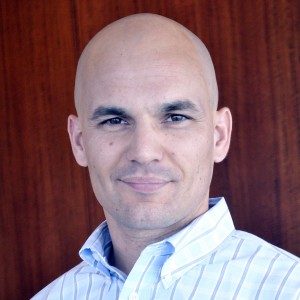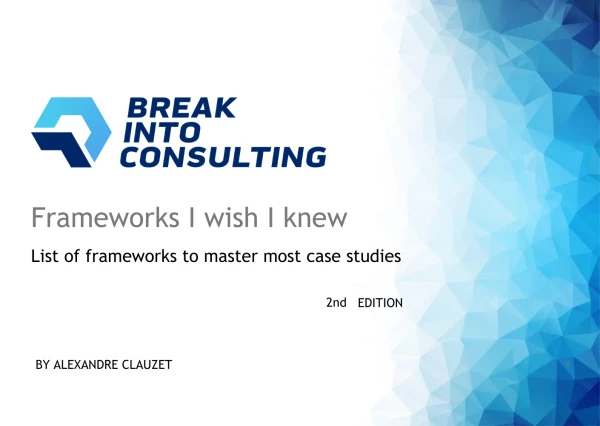Hi,
What is your framework for finding the total number of gas station, McDonald, Starbucks questions?
Thanks
Hi,
What is your framework for finding the total number of gas station, McDonald, Starbucks questions?
Thanks


Hi,
I am not completely sure whether you are talking about the general calculations or a market sizing quant problem.
If it is the general math, you follow these steps:
If it is a market sizing problem, there are several things you should know:
1) First of all, there are two ways to calculate market size:
2) There are 2 ways to structure market sizing:
3) You should use the key market sizing techniques:
4) You should learn and use the key tools:
5) Learn and use the key numbers: populations, gas price, gas consumption, Boeing speed and nmber of seats, average salary, # of gates in the airport, GDP growth rate, inflation, etc.
Good Luck!

Hi,
1) First of all, there are 2 ways to structure market sizing:
2) You should learn the key market sizing techniques:
3) You should learn the key tools:
4) Learn key numbers: populations, gas price, gas consumption, Boeing speed and nmber of seats, average salary, # of gates in the airport, GDP growth rate, inflation, etc.
5) Practice 10-15 cases and you'll be fine
Feel free to PM for clarifications
Good Luck!

Hi Anonymous,
these are the steps I would suggest to be able to correctly structure a market sizing upfront:
Best,
Francesco

Hi,
assuming that with the term „guesstimating question“ you are referring to market sizing questions, please find bit of advice below:
Hope this helps!

Hi,
First of all marketsizing is not about geting the true numbers but rather about your approach. So if your marketsizing results are different from the numbers that you can google - it doesn't really matter. What matters is how you make the assumptions and justify them to the interviewer.
Secondly - your approach is good as well. Most probably you've uinderestimated the number of gas stations per disctrics / did not include the surbubs with gas stations for the trucks.
Best!

Hi there,
My experience is that you need to practice and in everyday life there are plenty of opportunities to do so.
when you are traveling to work/institute: how busses are there in the city, how many bus stations, how many bus lines, etc....
Out in the evening in some bar/cafe: how many people visit that place every day, every week every month, how much bewereges are consumed, how many similar palces are there in the city, etc...
etc. etc.
First time it will be kind of strange and you will think 'what the hell I know' but you will get better with practice. If you would do it with somebody else will be funnier and more effective :)
First, understand what is the "ocean" (e.g. assess the main dimensions of plane, etc.)
Second, understand the unit with which you deal (e.g. ball, ppl, table)
Third, understand the limitations & bottle-necks (e.g. has to be a space for the people to move back & force)
The last, do the math
Important: don't try to be precise. The way you think is much more important than the figures. But don't diminish meaning of figures as well.

Hi Anonymous,
firstly, you should be aware that it is okay to take a moment in order to lay out the calculation steps. Just let the interviewer know that you are first taking a moment to outline the necessary calculatory steps, then sharing and aligning these steps with him, and finally executing the calculation (while taking the interviewer along).
This is a crucial skill that consulting interviewers look for in a candidate, becaus guess what - this is exactly how you need to walk clients through your thinking on a day to day basis.
Cheers, Sidi
Initially, most of my peers approached guestimates using the "general to particular" approach. For example, estimating the market size of Lipsticks in Country A will require to start with the number of women in the country, and then break it down by age, purchasing power, preferences, and so on. In each level of your tree, you will "plug-in" assumptions which will be used to make the calculations and arrive to a final answer.
This approach tends to be very safe since it makes easier to structure the information and allows you to start with some information you might now (population of your country or city, distribution in terms of genre and purchasing power, etc.). The problem is that it usually takes a lot of time and will require you to do a lot of calculations.
Later during my preparation, I had the chance to tackle guestimates with one of my McKinsey buddies and he gave me the following recommendations:
Once you start approaching guestimates keeping these three things in mind, you will find yourself solving guestimates with ease and precision. I hope it helps and let me know if you want to practice some!
All the best,
Patricio
Totally agree with Vlad - it's not at all about the true number, as long as your result is within the realm of possibility. If you say there are 7 or 70,000 gas stations in Paris I would question your judgment. But saying 120 or 300 and basing that on a solid set of assumptions is totally fine.
If I was the interviewee, with this specific case, I would actually try to steer the conversation into a different direction - how the number is changing due to the changes in urban transport (public transport, ride sharing, e-mobility...). Because that is a strategy discussion. Trained monkeys can count gas stations, and elementary school children can do the math for your assumptions. But only smart people can have a thoughtful strategy discussion. If you're face to face with the right interviewer, that might score you some points. If he just wants you to do basic math, then you can still go back to doing that...
BTW: Paris, in particular, is tricky, because the 2.2 Million refer to Paris "inter muros", so the actual city. The agglomeration is of course vastly larger, so much of the supply for the city might just be outside of the walls of the city (cheaper real estate, lower taxes etc.). Just like you don't have that many gas stations in Manhattan or the City of London...
my approach would be to match supply with demand.
for the gas station case, on the demand side:
-Start with the total population of the area you're looking into
-get the number of households
-then estimate the number of cars per household (on average 1.5 cars for example)
-now you have the total number of cars
-get the consumption in liters of fuel per car on average
-then you can add an extra 20% for the commercial vehicles (buses, trucks, and so on)
- now you have your total demand of fuel per day or week or month or year.
Supply Side:
-start by sizing the gas station
-estimate the number of pumps (5 usually)
-the time the vehicle take to fill in the tank
-the average quantity in liters each cars fills in
-now you can get the total number of liters that can be filled in an hour, for example, if the pumps are operated at full capacity
-assume a certain capacity utilization of the gas station (say 50%)
-now you got your total supply of fuel per gas station per day or week or month
final answer: divide the total daily demand BY the total daily supply per gas station
Hi,
Usually students struggle because no one has previously explained the basic principles. It makes you panic every time you see a arket sizing question and feel like it is a lot worse than it actually is.
The basic premise of these types of questions is: what is the £/$ value so demand or population size of using a specific product. I like the toothbrush example.
Let's say there are 10mn people in London and 90% use a toothbrush. That is 9mn toothbushes being used, now let's say at a price of £2 per toothbrush, London market size is £18mn.
The above is very basic and there are lots of factors to add. But hopefully this helps as the starting point. The rest is additional info and 'colour' to the story (growth, etc.).
Hope this helps, let me know if you want to practise these.

Hi,
Depending on what you call a Guestimate. I've seen that some books using the word "guesstimates" for market sizing, for brainteasers and for the mix of both (weight of the Boeing). The basic recommendations to practice are the following:
Best

In a market sizing exercise, there are 2 broad ways of starting: either top down, or bottom up. Top down will be more high level, “baby math” (my former boss, an ex-McK, used to run a $5B business w/ back of the envelope / baby math calculations -> very powerful actually).
The other way is bottom up, which can quickly become very complex due the multiple assumptions and calculations. Then again, you will mostly do multiplications here, whereas top-down would largely be divisions.
My own recommendation onmarket sizing exercises is usually to start w/ the top down, and only do the bottom up if your interviewer makes it clear that’s what’s expected. Doing the bottom up from the get go might take longer than you are supposed to take, and also quickly become very tedious / error prone / precisely wrong vs. roughly right. Put it another way… don’t give me a 2x4 to beat you up with, trust that your interviewer is smart enough to make your life miserable
PS: To address your question more specifically now, and assuming you do indeed have to do a bottom-up exercise. I would typically start from the demand (how many people drive how many miles how a vehicle with what kind of efficiency; how many people eat how many burgers / drink how many overpriced lattes); I would then move on to the supply (how many people / cars can one gas station/restaurant serve), before ultimately dividing one with the other
Hope this helps







